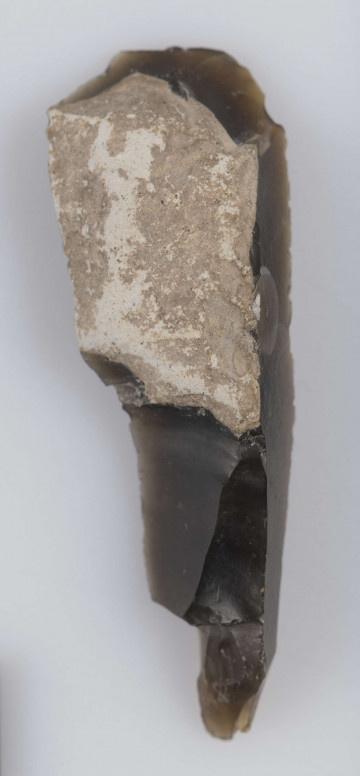
Axe
National Museum in Lublin
Part of the collection: Set of archaeological relics found in the Lublin Region
The presented artefact was discovered in the village of Zbójno, in the Parczew district. By comparing a number of similar axes, archaeologists can conclude that it was made about 5 thousand years ago by a representative of the Funnelbeaker Culture, which lived in this area at that time.
The raw material of the axe, stone, is one of the oldest materials used by man. Found in almost every region of the world, stone has served man for millennia and only with the advent of the metal age did it become less common.
Stone axes could serve many functions. From the very mundane, such as a tool for processing, through a weapon of war, to a symbolic attribute of power.
How was the stone axe made?
First, a suitable piece of stone had to be selected. Then the outline of the axe was obtained by hitting the raw material with a stone pestle. After this pre-treatment, all the surfaces were honed on a stone grinding plate. To increase the effectiveness of the friction, the plate was sprinkled with damp sand. The next step was to make a hole. This difficult task was performed by using an arch auger. It was a device consisting of a wooden axe with a drill attached to it, which was usually a hollow bone. The drill was set in motion by using a bow and thong to wrap around the wooden axis. In order to increase the drilling efficiency, sand was often poured under the drill bit. After several hours of work, the hole was ready and a wooden handle, i.e. a handle boss could be placed in it.
Author / creator
Dimensions
cały obiekt: height: 12,2 cm, width: 4,6 cm
Object type
axe
Technique
drilling
Material
stone
Creation / finding place
Owner
The National Museum in Lublin
Identification number
Location / status

National Museum in Lublin

National Museum in Lublin

National Museum in Lublin
DISCOVER this TOPIC
National Museum in Lublin
DISCOVER this PATH
Educational path